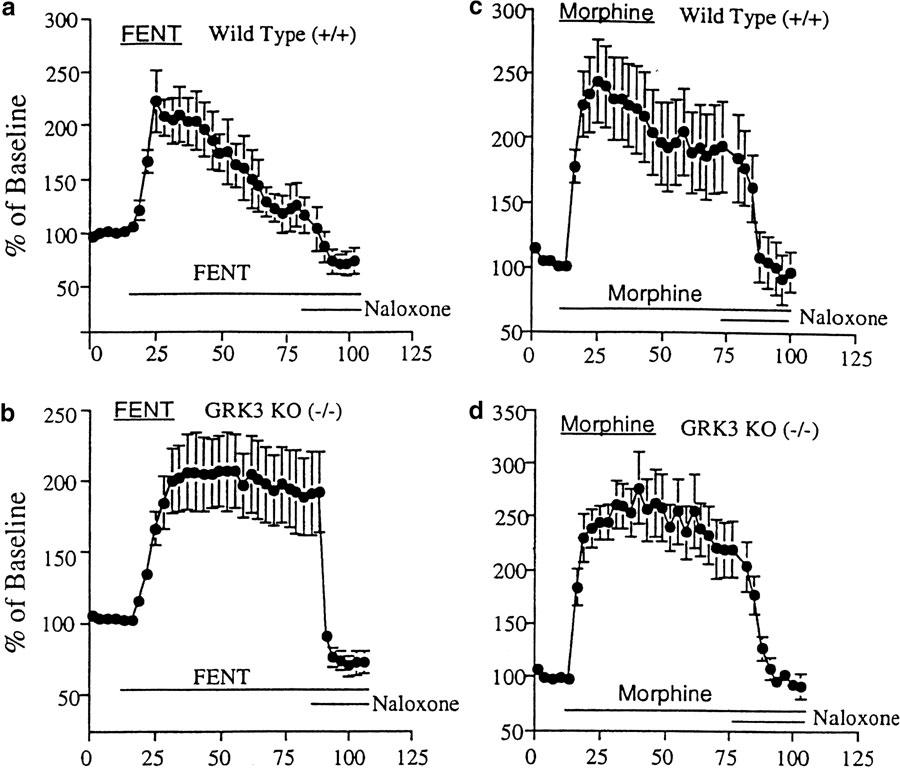Figure 5.
GRK3-mediated tolerance to opioid-induced population spike facilitation in hippocampal dentate gyrus. (a) Fentanyl (FENT) (300 nM) significantly increased the amplitude of the evoked response from perforant pathway stimulation in brain slices from wild-type GRK (+/+) mice. This potentiation was almost eliminated after 60 min of FENT exposure and completely reversed by naloxone (1 μM) at the end of the experiment. Indeed, naloxone produced a significant decrease in excitation (overshoot) compared to predrug baseline responses. (b) In slices from GRK (−/−) mice, the FENT-induced population spike enhancement showed minimal tolerance after 60 min although naloxone again completely reversed the FENT potentiation with a similar overshoot. (c) Like FENT, morphine (10 μM) produced a potentiated evoked response in slices from wild-type (+/+) mice. The 60 min of exposure to morphine produced less tolerance than that seen following 60 min of fentanyl, although naloxone again completely reversed the opioid-induced excitation. (d) In slices from GRK3 (−/−) mice, morphine again potentiated the evoked potentials in a naloxone reversible way. However, little tolerance was observed during the 60 min of morphine administration. Data are presented as means±s.e.m.

